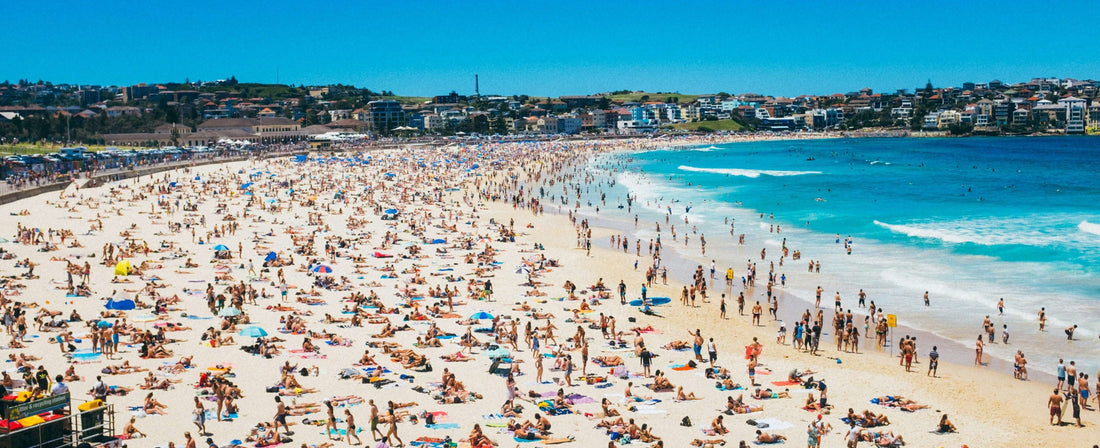
How Australia's Beaches Drive a Billion-Dollar Industry
Share
Australia’s Beaches are More Than Just a Pretty View.
Whether it’s beach Volleyball at Christmas, sailing the Whitsundays on Easter Sunday, or flocking to Bondi on Australia day, there’s no denying that beaches might just be Australia's best asset.
While it’s difficult to place an exact value on how much Australia’s beaches impact its economy, the following offer some indication and the numbers speak for themselves:
- The Great Barrier reef offers an estimated $6.4 billion economic contribution every year.
- The Whitsunday Islands have experienced a tourism surge, with visitors contributing an excess of $1.5 billion to the region annually
- The Ningaloo Coast generates $110 million annually to the economy of Western Australia
- In Tasmania, Flinders Island tourism contributes $4.3 million to the economy
Beyond economic, Australia’s beaches are deeply ingrained in everyday life:
- Its estimated 87% of Australia’s population live within 50km of the coast
- There were more than 650 million individual visits to the coast in the last year, with 86% of these visits being to the beach
- Australians took nearly 31 million day trips to the beach, spending roughly $3 billion
- A survey of 385 coastal residents in south-eastern Australia found that 85% visited the beach atleast once a month, and 45% visited weekly
The importance of beaches in Australia cannot be understated. Economically, socially, and culturally, they shape the way we live and work. More than just a scenic backdrop, they fuel tourism, drive local businesses, and influence lifestyle trends across the country.

How Australia’s coastal culture created a Global Industry
Australia’s beach lifestyle hasn’t just inspired local businesses, it shaped entire global industries. Some of the biggest surf and beachwear brands in the world were born on Australian shores, fueled by a love for the ocean and the need for high-quality gear.
- Rip Curl - Founded in 1969 in Torquay, Victoria, Rip Curl started as a humble surfboard company before evolving into one of the world's most iconic surf brands. The founders, Doug Warbrick and Brian Singer, were surfers themselves, designing products to withstand Australian waves before expanding into wetsuits and apparel.
- Billabong - Created in 1973 on the Gold Coast, Billabong began with handcrafted board shorts designed for durability. Its innovative designs and sponsorship of surf competitions helped turn it into a household name in surf culture.
- Quiksilver & Roxy - Originally an Australian brand (now owned by an American company), Quiksilver’s success followed a similar path, catering to the needs of serious surfers before becoming a lifestyle brand recognised worldwide.
Brands like these didn’t just capitalise on Australia’s beach lifestyle, they helped define it. They transformed surf culture into a mainstream industry, proving again that beaches are not just for leisure, they’re powerful economic drivers that inspire creativity and innovation.

The evolution of Beach Essentials like Kaspian Beach Towels
Beyond surf brands, the demand for better beach essentials has fueled innovation. A day at the beach isn’t just about relaxing by the waves, for beach lovers, having the right essentials can make all the difference.
The high demand for reef-safe sunscreens has led to innovations that protect both our skin and marine life, addressing environmental concerns. Reusable water bottles and eco-friendly beach gear are becoming the norm as sustainability takes priority. Even something as simple as beach towels have evolved, like those from Kaspian; sand-free, quick-dry fabrics are now a must-have for anyone tired of bringing half the beach home.
These industries don’t just cater to beachgoers - they exist because of them. The millions of people flocking to the coast each year have shaped entire markets, from swimwear and surfboards to sustainable accessories designed for the Australian lifestyle. It’s clear that Australia’s beaches are more than just places of leisure - they’re economic powerhouses that continue to inspire innovation and industry growth.
